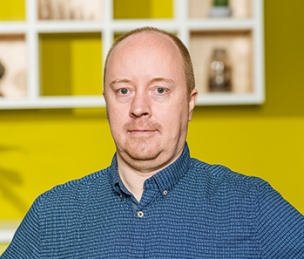Displaying 1 - 6 of 6
-
Seyfeddinipur, M., Ameka, F., Bolton, L., Blumtritt, J., Carpenter, B., Cruz, H., Drude, S., Epps, P. L., Ferreira, V., Galucio, A. V., Hellwig, B., Hinte, O., Holton, G., Jung, D., Buddeberg, I. K., Krifka, M., Kung, S., Monroig, M., Neba, A. N., Nordhoff, S. and 10 moreSeyfeddinipur, M., Ameka, F., Bolton, L., Blumtritt, J., Carpenter, B., Cruz, H., Drude, S., Epps, P. L., Ferreira, V., Galucio, A. V., Hellwig, B., Hinte, O., Holton, G., Jung, D., Buddeberg, I. K., Krifka, M., Kung, S., Monroig, M., Neba, A. N., Nordhoff, S., Pakendorf, B., Von Prince, K., Rau, F., Rice, K., Riessler, M., Szoelloesi Brenig, V., Thieberger, N., Trilsbeek, P., Van der Voort, H., & Woodbury, T. (2019). Public access to research data in language documentation: Challenges and possible strategies. Language Documentation and Conservation, 13, 545-563. Retrieved from http://hdl.handle.net/10125/24901.
Abstract
The Open Access Movement promotes free and unfettered access to research publications and, increasingly, to the primary data which underly those publications. As the field of documentary linguistics seeks to record and preserve culturally and linguistically relevant materials, the question of how openly accessible these materials should be becomes increasingly important. This paper aims to guide researchers and other stakeholders in finding an appropriate balance between accessibility and confidentiality of data, addressing community questions and legal, institutional, and intellectual issues that pose challenges to accessible data. -
Wittenburg, P., & Trilsbeek, P. (2010). Digital archiving - a necessity in documentary linguistics. In G. Senft (
Ed. ), Endangered Austronesian and Australian Aboriginal languages: Essays on language documentation, archiving and revitalization (pp. 111-136). Canberra: Pacific Linguistics. -
Wittenburg, P., Trilsbeek, P., & Lenkiewicz, P. (2010). Large multimedia archive for world languages. In SSCS'10 - Proceedings of the 2010 ACM Workshop on Searching Spontaneous Conversational Speech, Co-located with ACM Multimedia 2010 (pp. 53-56). New York: Association for Computing Machinery, Inc. (ACM). doi:10.1145/1878101.1878113.
Abstract
In this paper, we describe the core pillars of a large archive oflanguage material recorded worldwide partly about languages that are highly endangered. The bases for the documentation of these languages are audio/video recordings which are then annotated at several linguistic layers. The digital age completely changed the requirements of long-term preservation and it is discussed how the archive met these new challenges. An extensive solution for data replication has been worked out to guarantee bit-stream preservation. Due to an immediate conversion of the incoming data to standards -based formats and checks at upload time lifecycle management of all 50 Terabyte of data is widely simplified. A suitable metadata framework not only allowing users to describe and discover resources, but also allowing them to organize their resources is enabling the management of this amount of resources very efficiently. Finally, it is the Language Archiving Technology software suite which allows users to create, manipulate, access and enrich all archived resources given that they have access permissions. -
Broeder, D., Claus, A., Offenga, F., Skiba, R., Trilsbeek, P., & Wittenburg, P. (2006). LAMUS: The Language Archive Management and Upload System. In Proceedings of the 5th International Conference on Language Resources and Evaluation (LREC 2006) (pp. 2291-2294).
-
Trilsbeek, P., & Wittenburg, P. (2005). Archiving challenges. In J. Gippert, N. Himmelmann, & U. Mosel (
Eds. ), Essentials of language documentation (pp. 311-335). Berlin: Mouton de Gruyter. -
Wittenburg, P., Skiba, R., & Trilsbeek, P. (2005). The language archive at the MPI: Contents, tools, and technologies. Language Archives Newsletter, 5, 7-9.

Share this page